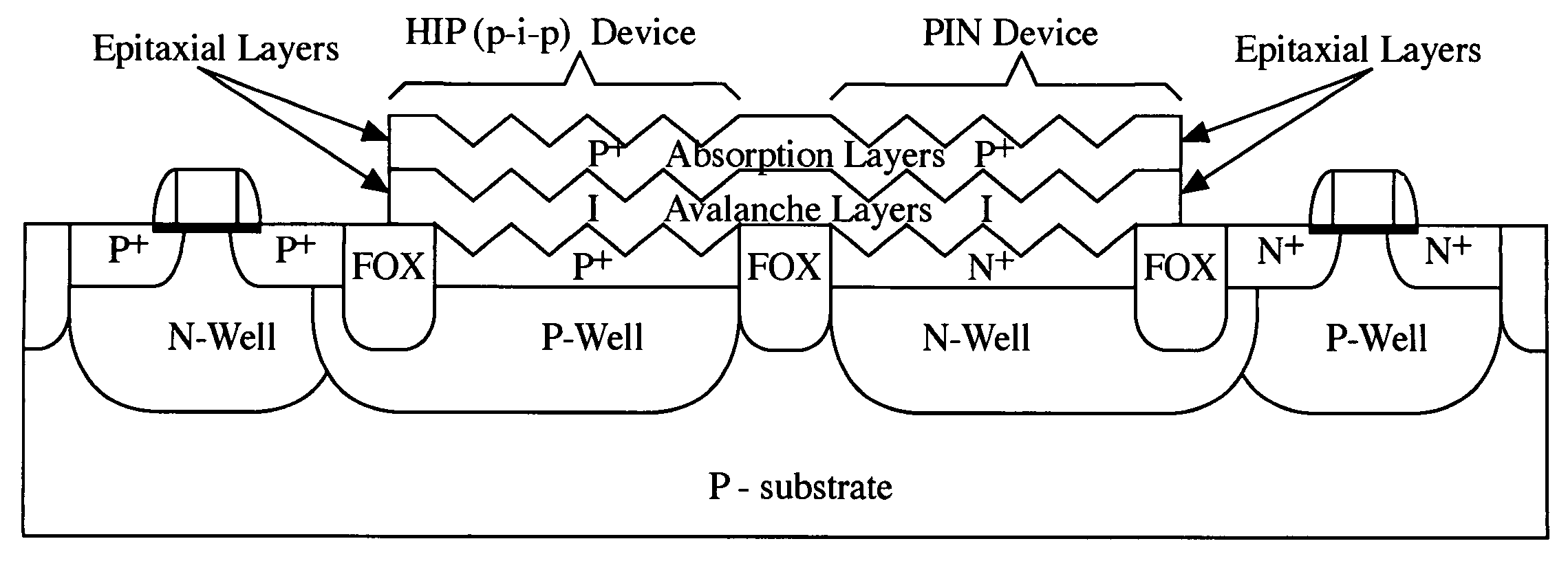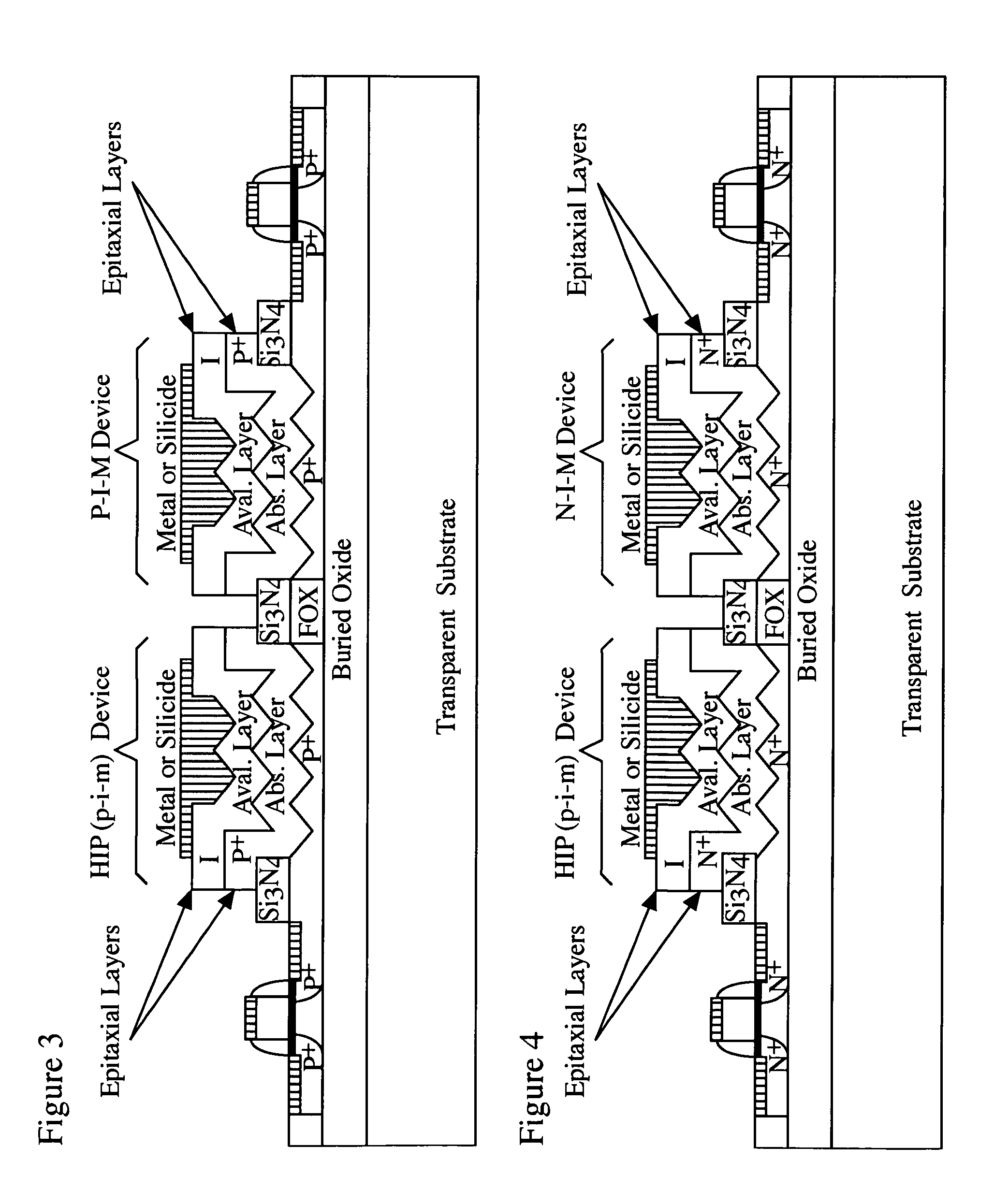Light-sensing device
a light-sensing device and optical conversion technology, applied in the field of optical to electronic conversion, can solve the problems of increased noise, decreased light-detection performance, and weaker visible light signal than uv light signal,
- Summary
- Abstract
- Description
- Claims
- Application Information
AI Technical Summary
Benefits of technology
Problems solved by technology
Method used
Image
Examples
Embodiment Construction
[0052]The present invention uses a process architecture which enables the fabrication of bandgap and doping engineered photodiodes, monolithically integrated with state of the art CMOS transistors. The exemplary process flow uses a selective or non-selective epitaxial growth of the photo-diode device layers on silicon-based or germanium-based substrates.
[0053]Epitaxial growth of PIN photo-diode devices integrated with CMOS devices on a semiconductor substrate is disclosed in WO / EP01 / 11817. One of the many advantages of fabricating PIN (or PN) photodiodes through the epitaxial growth process step on active area “windows” formed on the CMOS wafer, is the straightforward incorporation of Si1-x-yGexCy alloys and / or superlattices during the epitaxial growth thereby allowing the improvement of different device parameters, such as coefficient of absorption and bandgap engineering, with respect to similar devices made with pure silicon. Such possibility is not available to pn-junctions form...
PUM
 Login to View More
Login to View More Abstract
Description
Claims
Application Information
 Login to View More
Login to View More - R&D
- Intellectual Property
- Life Sciences
- Materials
- Tech Scout
- Unparalleled Data Quality
- Higher Quality Content
- 60% Fewer Hallucinations
Browse by: Latest US Patents, China's latest patents, Technical Efficacy Thesaurus, Application Domain, Technology Topic, Popular Technical Reports.
© 2025 PatSnap. All rights reserved.Legal|Privacy policy|Modern Slavery Act Transparency Statement|Sitemap|About US| Contact US: help@patsnap.com



